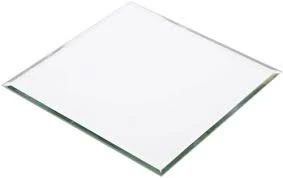

Fusing with Float Glass A Versatile Technique in Contemporary Glass Art
Fusing with float glass is an innovative and versatile technique that has garnered attention in the world of contemporary glass art. This method involves the process of melting glass pieces together to create unique and intricate designs. Float glass, known for its clarity and smoothness, serves as an excellent medium for artists looking to push the boundaries of traditional glasswork.
Float glass, first developed in the 1950s, is produced through a method where glass is floated on molten tin, resulting in a flawless surface. This process not only yields a transparent glass that is more uniform in thickness but also creates a material that is ideal for fusing. The smooth surface allows for intricate layering and the seamless joining of glass pieces, enabling artists to explore a myriad of creative possibilities.
One of the most significant advantages of using float glass in fusing is its excellent compatibility with various colors and types of glass. Artists can combine colored glass pieces with clear float glass to achieve stunning visual effects. The clarity of the float glass enhances the colors of the fused elements, allowing for vibrant displays of light and shadow that can transform the ordinary into the extraordinary.
In the fusing process, glass is often cut into desired shapes and sizes before being layered and placed in a kiln. Kilns are temperature-controlled ovens that heat the glass to a melting point, allowing the pieces to bond together. The temperature and duration of the heating cycle are crucial, as they dictate the final outcome—too high a temperature or too prolonged a heating can lead to undesirable results. Therefore, precision and careful monitoring are essential components of successful glass fusing.

Artists employ various techniques when fusing with float glass, including layering, slumping, and casting. Layering involves stacking pieces of glass on top of one another, allowing them to fuse together during the heating process. This technique can create depth and texture in the final artwork. Slumping, on the other hand, involves heating the float glass so that it softens and takes the shape of a mold beneath it. This technique can be used to produce functional items such as bowls and platters, as well as decorative pieces.
Casting is another technique that adds depth to the art of fusing with float glass. By pouring molten glass into a mold, artists can create three-dimensional sculptures that capture movement and form. This technique allows for greater expression, as the resulting pieces can range from abstract forms to realistic interpretations of nature and human figures.
The beauty of fusing with float glass lies not only in its aesthetic appeal but also in its accessibility for artists of all skill levels. Unlike traditional glassblowing, which requires extensive training and experience, fusing can be more approachable. Many artists start with kiln-fused glass as a means of exploring their creativity before advancing to more complex glassworking techniques.
Moreover, the sustainability of float glass contributes to its appeal. As environmental awareness rises, artists are increasingly seeking materials that align with eco-friendly practices. Float glass can be recycled multiple times, making it a sustainable choice for artists who prioritize environmental responsibility.
In conclusion, fusing with float glass is a dynamic and engaging technique that continues to inspire artists and enthusiasts alike. Its versatility, coupled with the inherent beauty of the glass medium, allows for limitless creative exploration. As technology advances and new methods are developed, the world of glass fusing is poised to evolve further, providing fresh avenues for artistic expression. Whether creating functional art or striking visual pieces, the fusion of float glass reflects the innovative spirit of contemporary glass artists, illuminating the path forward in this captivating medium.